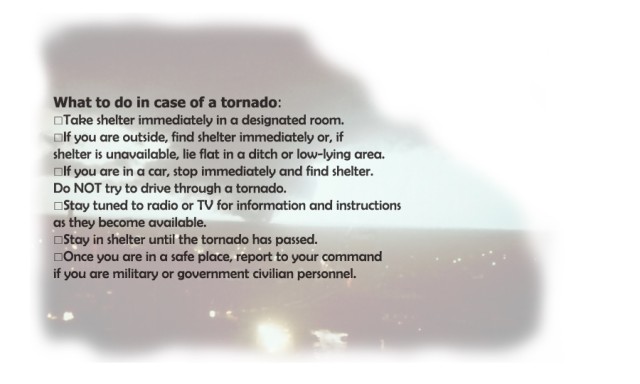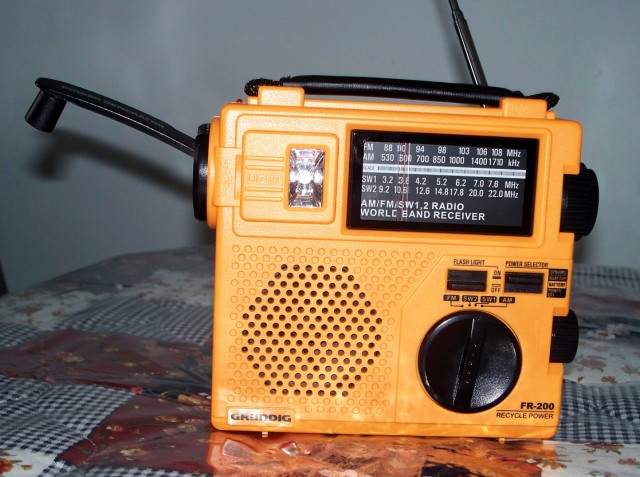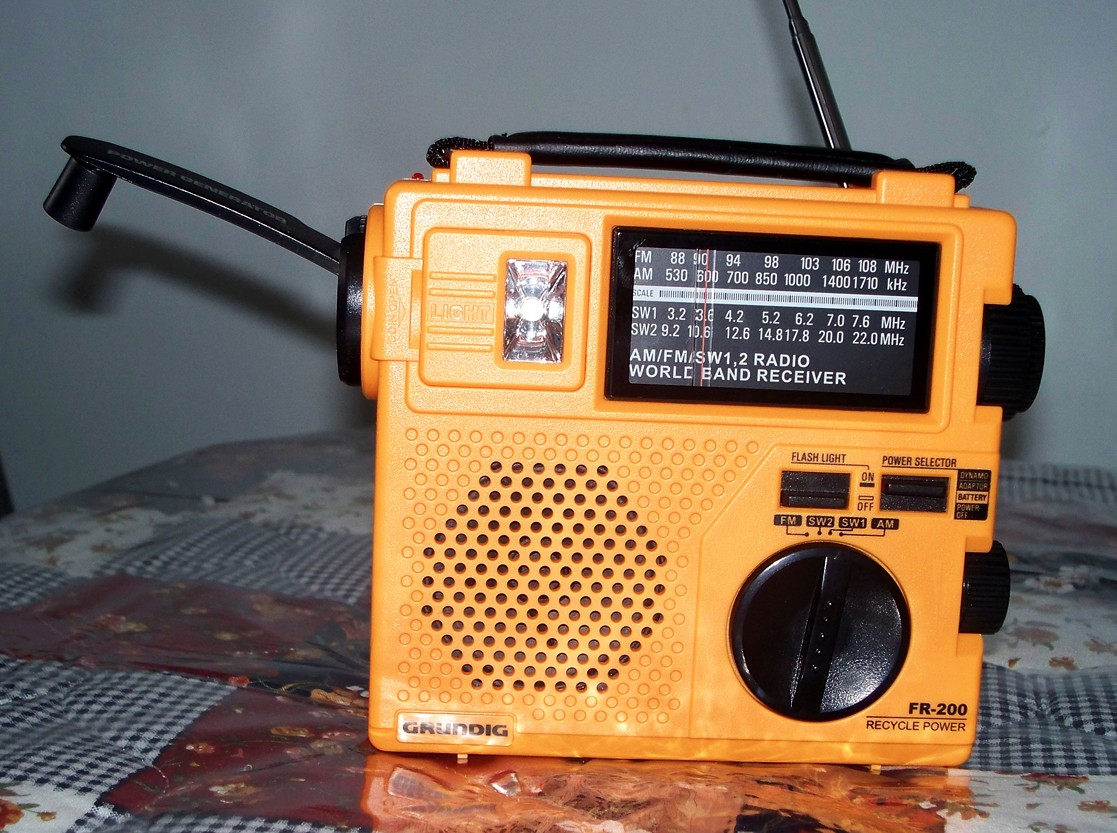This is the first in a two part series
Weather is a flirty thing, teasing us with fabulous possibilities one moment, and scaring us with anxiety the next.
Thirty-five years ago this month Brandenburg, located 17 miles west of Fort Knox and home to many people who work on the installation, found out how fickle weather can be.
A swelling storm cell, part of a front moving through the region on April 3, 1974, spawned one of the deadliest tornados in Kentucky history, and hit the town with F5 force winds. At times, according to National Oceanic and Atmospheric Administration National Weather Web site, the velocity of the wind reached more than 260 miles an hour-strong enough to blow a curtain rod two inches into a tree, and strip the bark off another.
Storm warning systems in 1974 were not as compressive and advanced as they are today, so the residence of the town, located on the banks of the Ohio River, had very little notice of anything more than thunderstorms in the area.
"I don't remember any of the (earlier) day...We road the buses home as normal, and then the storm hit as we were getting off the buses," recalled Susan Padgett, chief of advertising and marketing division, for Accessions Command G-4, located at Fort Knox.
Padgett's family lived closer to Flaherty. Her father worked for the Corps of Engineers and the family traveled around the region to whatever project her father was working. At the time, he was helping redo Ireland Army Community Hospital-a place that would be a major player in the aftermath.
Padgett, who worked in the Armor Center before her recruiting and accessions jobs, was a freshman at Meade County High School at the time. She said a tornado warning for Meade County had just been issued when her mother picked her up in the car from the bus.
"I remember my Mom met us-Mom was a lot more cautious then most because we had been in two tornados already," she said. "We had a long driveway and lived in a mobile home at the time. Our driveway had a huge dip in it. She drove into the dip (in the driveway) and stayed there," Padgett added.
"We had the radio in the car tuned to the Brandenburg station and I remember the announcer was very agitated and he kept saying, 'It's coming! It's coming! It's coming!' and then the station went off the air."
According to NOAA's Web site, as the twister roared through the town of 2,000, it killed 31 people and injured 270.
The winds destroyed buildings that had withstood Col. John Hunt Morgan's Civil War march as he swarmed through town with 2,500 troops. Churches, stores, the Meade County court house, a cemetery, houses, and anything else that stood in the storm's path were blown away.
A Fort Knox DPW employee, who wished to keep most of the day to herself, said she was a high school junior at the time and lived just outside of town. Her father let her drive as he and her two brothers left that afternoon to go to the grocery store in town.
"Right around where the Southern States used to be, I (broke to stop) because the car started shaking real bad," she recalled. "Everything was milky white-it sort of came over the road...I don't remember hearing anything; I just remember the milky white and the real strong winds that shook the car."
She remembered that after the winds stopped shaking the car and the milky whiteness faded, her father told her it was ok to go on.
"The tornado must have been right in front of us. We went by where the court-house is now, and there were people from back up in (that neighborhood) who were walking to the doctor's office-they were injured," she said. "The small red brick building on the right going down through town (toward the river) was a doctors office on the top-the only one in town-and a pharmacy on the bottom."
When the storm cell moved east, the tornado reformed as an F4 over Louisville destroying many historic neighborhoods.
Padgett said her family had already weathered two twisters at that point-one took their roof off when they lived in Indiana, and the other flipped a mobile home they lived in while on an earlier assignment in Kentucky. The family had just evacuated before their home was flipped.
Overall Padgett has learned several severe weather lessons. She said that one thing is to pay attention to the weather because you never know what it will do.
"We ran from storms for years (when I was a child)-every time where was a storm, we left," she recalled.
David Fusselman, the Chemical, Biological Radiological, Nuclear and High Yield Explosives/ Emergency Management Operations Specialist at Knox, said tornadoes are the most violent natural hazard and the destructive winds-speeds that can reach as high as 300 mph-are the worst part. Most tornadoes occur between March and August, but they can occur at any time of year.
The other thing that Padgett learned was where to go to be safe, and what to have on hand.
"My bedroom is in the south-east corner of our basement. When we built the house that's where I wanted it to be-I can go to sleep and be as safe as I can be," Padgett said. "I always have two or three flashlights and extra batteries, candles, matches and extra water and I know where they are. I could be much better prepared though.
"We like to camp, so we have lanterns, and a camp stove so when we don't have electricity we're ok."
Over the last three years this area has seen several tornados in towns like Cecilia, Brandenburg, and Elizabethtown, and Knox is not immune.
Fusselman said that the installation experiences straight line winds often-for example the storms at the beginning of April.
"Believe it or not however, the weather station reported that in the past 15 years there has only been one confirmed tornado on the reservation and that was in 1996," he said. "Of course their radar shows signs of tornado like activity sometimes on unoccupied areas of the installation, but without anyone to confirm a tornado it is not reported as such."
He said that people who live and work on post can sign-up for severe weather updates on their computers via the EMO master distribution list, which is used for the weather advisories.
"We encourage personnel to utilize their unit's readiness (and) contact groups during times of severe weather," Fusselman added. "Severe incidents, not just weather, are also posted on the Fort Knox Web site in the 'Messages and Advisories' section.
"Residents of Fort Knox should be briefed on their organizations specific plans and should develop their own procedures for severe weather using the Ready Army theme of 'Get a Kit, Make a Plan, and Be Informed.'"
In addition to the internal mass notification system, Knox has severe weather sirens that can be heard installation wide in the event of severe weather, as well as an exterior voice announcing system or "Giant Voice," Fusselman said.
He also reminded that tornadoes strike quickly, with little or no warning, and all personnel should be prepared. A home emergency preparedness kit may already offer many items that could also be useful during tornadoes, such as a family emergency plan, flashlights, batteries or a hand-crank radio.
"Knowing the warning systems and being personally prepared could save a life," he added. "As unpredictable spring weather approaches, Ready Army is reminding Army personnel and their families to prepare themselves for the possibility of tornadoes. All Army personnel should also continue to maintain a basic level of preparedness for all potential hazards."
SIDEBAR:
Where to Find Additional Information
Aca,!Ac US Army- www.ready.army.mil
Aca,!Ac American Red Cross-www.redcross.org
Aca,!Ac Centers for Disease Control and Prevention-www.bt.cdc.gov
Aca,!Ac Federal Emergency Management Agency- www.fema.gov
Aca,!Ac You can also dial 624-knox for installation status




Social Sharing